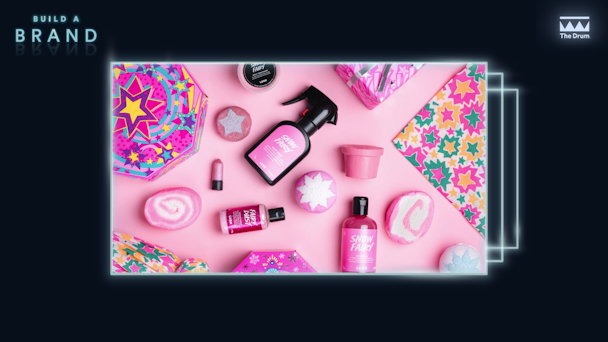Four lessons for building fandoms, featuring Lego, Lush and NTS
We explore how brands have built cult followings by fostering community and giving fans multiple touchpoints to interact.

Lush, Lego and NTS case studies for building fandom
Consumers are bombarded with hundreds of marketing messages a day, meaning traditional campaign marketing can fail to cut through the noise. Now more than ever, brands need to be plugged into multiple touchpoints and have an always-on approach to building cultural fandoms around their brand.
Some brands start from digital beginnings and cross over to the physical world. Others begin with a product and build a world that stretches into the online space.
Advertisement
Lush
British cosmetics retailer Lush has built its brand by harnessing its communities of fans on platforms such as Reddit, enabling them to hold it accountable and engage with its audience. In lockdown, this inspired Lush to set up a subscription service just for fans, which was based on retro products.
Lush has allowed its customers to be part of the product creation. For example, Toby’s Magic Cow bath bomb came about after a 10-year-old wrote to Lush and asked for a bath bomb specifically for her brother, Toby. Now one of its best-selling products, the rich narrative perfectly aligns with Lush’s brand world.
Advertisement
Lego
The Lego Group has a massive fan base of kids and adults. These adult fans even have their own acronym – Afol (adult fan of Lego).
Co-creation is pivotal to this, where Lego allows customers to suggest ideas that might then be created by the Lego designers. For example, Lego Dreams gave fans the ability to design creatures at home and then some were selected to come to Denmark and bring those designs into real life.
Lego had previously resisted letting customers get involved in the product or the content, with a preference to do things by the book, but after taking the risk, it has now found it a fruitful endeavor.
Suggested newsletters for you
NTS
NTS is a global online radio station founded in Hackney, London, that is shaped by its grassroots communities that are very active on platforms such as Discord. It also listens to its artists and DJs in markets around the world to ensure every partnership has the audience in mind.
The NTS x Top Boy collaboration is the perfect example of this – tapping into a culture through music and expanding Netflix’s presence among a Gen Z and millennial community.
When NTS works with brands, it asks them to trust the station to know what is best for its audience.
Rachel Matovu, strategy director at the creative agency Amplify, maps out her four rules to build fandoms:
1. Create stories that transport, engage and excite
“Develop stories with a rich narrative that harnesses the power of community. Think about where the stories can be placed across different destinations but remain consistent across each touchpoint.
“Consider where the story could start or where the focus can lie. Is your product the central hero? Who are the characters that exemplify your brand world? What journey or narrative thread could they follow?”
2. Harness communities from social platforms
“Strengthen your brand by inviting co-creation. Fostering a sense of ownership and collective experience can help forge new and lasting memories.
“More and more brands tap into niche culture – a place where diverse communities can belong. These communities can grow into fandoms, evolving with the brand. Expand your world by enabling participation. Could fans riff on an existing product? Remix the way you talk about it. We already see fans stitching content and bootlegging ideas – how could your brand build on this behavior?”
“Brands that are brave enough to give creators the keys and share the stakes can lead to an evolved presence that speaks to communities in new and interesting ways.”
3. Co-create to form new IP with fans
“Nurture your fanbase by encouraging your audience to grow with you. Lego’s chief designers were the original brand fans as children. This sense of brand love informs everything they do. Lego also understands the role of giving back to their own communities as seen in projects like Lego’s Build the Change playground installation in Harlem, NYC.
“How could you take your brand IP, dig into the audience behaviors at the heart of it and build the world around them? Worldbuilding allows us to move away from traditionally insular and predetermined brand building, forging new connections that extend into spaces that offer opportunities for engagement.”
4. Don’t think you need Barbie-sized budgets
“World building isn’t just reserved for the brands with the biggest budgets and entertainment IP; it can start small, creating stories that bring the brand to life through a cultural lens that resonates with an audience. There are already existing communities that love your brand; it’s about digging into those behaviors to leverage a bigger picture of what resonates and what can be elevated.”

